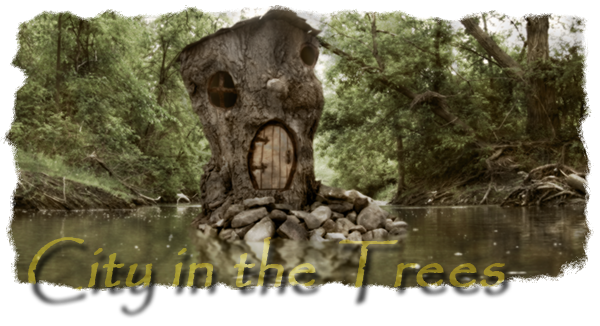One of the places in the city I've found interesting for several years now is what used to be Woodbine Avenue... the stretch between Lawrence Avenue and Steeles Avenue in particular. Much of it wasn't around very long, or at all, really. In the north end of the city, it has the misfortune — or colossal good fortune, depending on how you look at it — to have been in line with the course of the Don Valley Parkway.
The DVP was built in the early 1960s. Originally, it went as far north as Sheppard Avenue, where it petered out to become Woodbine Avenue immediately to the east of Fairview Mall. It had assumed the course of Woodbine south of that point, though for at least some of that stretch, there never actually had been a road, just the allowance. I don't believe there was ever an intersection of Woodbine and Lawrence, for example. The Don River's twists and turns simply made that unfeasible for people much before about 1950.
For many years, there was talk of extending the DVP northward, at least as far as Steeles Avenue, where Metropolitan Toronto ended. Eventually, the province took over the idea, and assumed the DVP from north of the 401, recreating it as the first stump of the 404. By 1976, the expansion was underway, and Highway 404 was well and truly born as it ate up Woodbine Avenue south of Steeles. At that point, it deked to the west, leaving Woodbine Avenue extant in York Region, where it is today a major thoroughfare. But in Toronto, that section of Woodbine is gone.
I'm used to roads being paralleled by, or bisected by, or underpassed by superhighways, but the idea of one taking over the course of a regular road is a strange idea to me. What made it possible is that so little actually existed on Woodbine Avenue inside Metro. For me, the most interesting dislocation caused by this was the intersection of Finch Avenue and Woodbine, which, of course, no longer exists as such (the relatively newly created intersection of Woodbine and Van Horne Avenue also ceased to exist at the time, though in a different fashion: for about ten years, the two streets met at a simple at-grade intersection; now Van Horne is carried by a bridge over the trench of the 404 with no interchange between them at all). (View below, Woodbine and Van Horne, 1970.)
Finch Avenue, for its part, has been a broken, fractured collection of several discontinuous roads across the north end of town, united in little but name until quite recently. Where it met with Woodbine was no exception. It formed a dogleg of about 30 yards. Just a little east, where it met Victoria Park Avenue, the separation between the two discontinuous parts of "Finch Avenue" was nearly half a mile! Below is a modern aerial view of the area. The red lines represent the broken course of Finch Avenue back in 1965. The yellow line was the course of Woodbine Avenue then, and Hwy 404 today. The blue line is Victoria Park Avenue. The two teal dots represent the approximate locations from which the 1965 photographs further below were taken.
This began to change in the 1960s, and was completed with Finch Avenue's own completion in the far west end in the 1990s. As for the dogleg at Woodbine, it was eliminated in 1976-1977 with the creation of Hwy 404 (you can see the new "swoop" of Finch Avenue in the modern aerial view above). A comparison of the 1965 dogleg intersection and the modern interchange:
The photos below, from the City of Toronto Archives' website, show the intersection of Finch and Woodbine in 1965, probably taken by someone who knew the view wouldn't survive the decade by much. The first photo was taken on Finch, facing east to the intersection with Woodbine, from the position of the lower teal dot in the aerial view. To the left in the picture (that is, north), you can see the disconnected continuation of Finch eastward towards Victoria Park Avenue, out of sight beyond the rise. Much of that stretch of Finch still exists today as a couple of residential streets (Pawnee Avenue and part of Micmac Crescent, to be specific) and a path through a park. It would be impossible to see this view today, because this is where Finch crests Highway 404 over a bridge in the middle of their interchange. Finch then veers away to the south, away from the old dogleg, to meet up with the other stretch of Finch at Victoria Park. Note the trees across Woodbine, marking the little lost homestead visible in the 1965 view in the comparison view above.
A similar view today.
This photo was taken on Woodbine Avenue to the north of both parts of Finch, facing south towards the 401 out of sight off in the distance, from the position of the upper teal dot in the aerial view. Today, the view would be southbound down the 404; back then, it was a two-lane road taking cars down to the DVP, and leading them north from it.
A similar view today (taken from approximately the location of the truck and the car in the above photo).
Another view of the intersection... this one from a book about Toronto dating from the late 1970s, and showing the view from the hilltop north of the homestead, facing west towards where Finch now meets Don Mills Road beyond the crest of the hill.


It goes without saying, I suppose, that virtually nothing in these shots still exists. The land in these views is now under either the highway, or the suburbs that were already being built out of sight up the rise on the right in the second photo. For me, it's one of the more dramatically-changed streetscapes in the city, which is one of the reasons I've found it so fascinating.
Parting shot: this is the location of the little homestead on the east side of Woodbine, today.

Parting shot: this is the location of the little homestead on the east side of Woodbine, today.











4 comments:
I remember this intersection very well, too. There was also a jog at Sheppard & Woodbine - more pictures at the archives.
All of the big jogs at Victoria Park (Finch, Sheppard, Roanoke/Lawrence, Eglinton) were a result of the way York & Scarborough townships were surveyed and the 200 acre lots laid out - Scarborough north from the lake - and York east/west of Yonge - but the little jogs at Leslie & Lawrence & Leslie & York Mills?
Hi, Anna. :) I gather the doglegs one sees from time to time within surveys are due to the curvature of the Earth. As the lines go north, the tend to converge, so in order to keep the lots the same size, either the sideroad or the concession road sets have to be periodically adjusted. Typically it's north-south roads; they get shifted at a baseline the requisite distance to 'reset' the pattern as it travels north; but perhaps the determination is based on how much use they figured the one set of roads would get as opposed to the other.
Steeles was one of the roads where a lot of these adjustments were made, which seems to be the reason it was chosen as the border between municipalities in the south of York County and those in the middle range... and eventually, the border between Metro and York Region. Lots of the north-south roads have these sudden S-curve adjustments where they meet Steeles.
Part of the problem might also be because Yonge was not straight - they had to make the correction just north of St Clair to line up the road from the north with the road from the south.
I think that all of the north south streets jogged at Finch as well - Warden for sure because I remember it - Kennedy too.
This link might interest you
http://www.ourroots.ca/page.aspx?id=958497&qryID=0d9e1830-6f13-4a92-ac48-c1418bac3334
I remember the intersection of finch and Woodbine very well. My parents had bought a home in the new neighbourhood, just east of Woodbine and north of Van Horn. Our home backed on to a big field that later became the extension of Finch. I recall the destruction of that field- where we used to play- and watched the bulldozers put in the new road.
Post a Comment